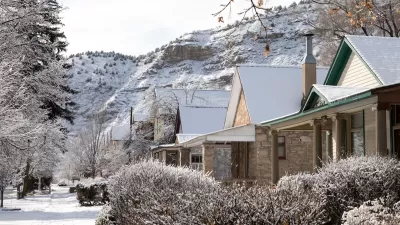The federal dollars that are making their way to infrastructure projects around the country are largely supporting highway and bridge projects as transit agencies struggling to finance day-to-day operations delay capital investments.

Federal investments made during the pandemic are starting to reach states, but much of the funding is going to road building, writes Dan Zukowski in Smart Cities Dive.
While contracts for road and bridge projects grew, contracts for rail and transit projects “slowed significantly,” with only 180 rail and transit contracts totaling $3.5 billion developed in 2022. By contrast, “The 38,220 contracts for roadway-related construction totaled $102.2 billion,” Zukowski explains. “In a separate ARTBA analysis of how infrastructure law highway and bridge funds had been used through Sep. 30, 2022, 46% went to roadway repair or reconstruction work while just 1% went to bike and pedestrian facilities.”
American Road & Transportation Builders Association Chief Economist Alison Premo Black points to the pandemic as one cause, saying “It’s not surprising that the capital investment has been scaled back while agencies have been so concerned about operations.” Transportation infrastructure spending is continuing to ramp up, with over 150 bills aimed at transportation projects introduced in state legislatures this year.
FULL STORY: Federal infrastructure funds begin to flow, mostly to roadwork

Alabama: Trump Terminates Settlements for Black Communities Harmed By Raw Sewage
Trump deemed the landmark civil rights agreement “illegal DEI and environmental justice policy.”

Planetizen Federal Action Tracker
A weekly monitor of how Trump’s orders and actions are impacting planners and planning in America.

The 120 Year Old Tiny Home Villages That Sheltered San Francisco’s Earthquake Refugees
More than a century ago, San Francisco mobilized to house thousands of residents displaced by the 1906 earthquake. Could their strategy offer a model for the present?

In Both Crashes and Crime, Public Transportation is Far Safer than Driving
Contrary to popular assumptions, public transportation has far lower crash and crime rates than automobile travel. For safer communities, improve and encourage transit travel.

Report: Zoning Reforms Should Complement Nashville’s Ambitious Transit Plan
Without reform, restrictive zoning codes will limit the impact of the city’s planned transit expansion and could exclude some of the residents who depend on transit the most.

Judge Orders Release of Frozen IRA, IIJA Funding
The decision is a victory for environmental groups who charged that freezing funds for critical infrastructure and disaster response programs caused “real and irreparable harm” to communities.
Urban Design for Planners 1: Software Tools
This six-course series explores essential urban design concepts using open source software and equips planners with the tools they need to participate fully in the urban design process.
Planning for Universal Design
Learn the tools for implementing Universal Design in planning regulations.
Clanton & Associates, Inc.
Jessamine County Fiscal Court
Institute for Housing and Urban Development Studies (IHS)
City of Grandview
Harvard GSD Executive Education
Toledo-Lucas County Plan Commissions
Salt Lake City
NYU Wagner Graduate School of Public Service





























